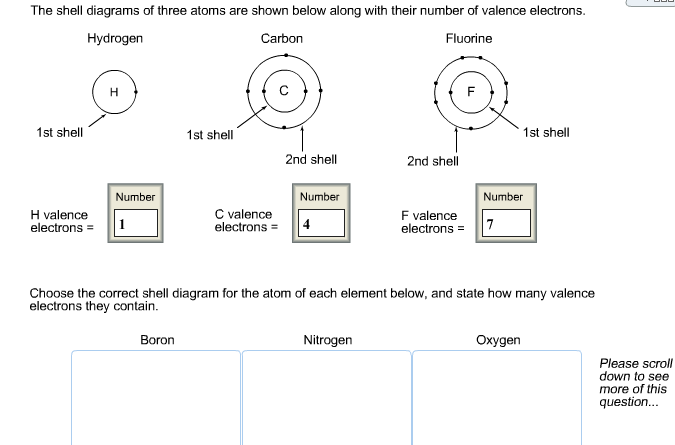| One lithium (Li) atom can combine with one fluorine (F) atom. Together, they make the formula LiF. Fluorine has seven electrons of it's own. Lithium gives up its one electron to make both atoms happy. So the fluorine atom has eight electrons, and a filled outer shell. | ||
| Two fluorine (F) atoms can also bond with one beryllium (Be) atom, making the formula BeF2. Beryllium gives up one of it's electrons to each of the fluorine atoms. The result give each of the fluorines eight electrons, making their shells full. | ||
| Fluorine (F) can also bond with aluminum (Al). Aluminum has three extra electrons and will easily let the fluorine atoms use them. Because aluminum has three, that means three fluorines can bond. The make the formula AlF3, also known as aluminum trifluoride. Each of the fluorine atoms gets an electron to fill their shell, and the aluminum loses three, giving it a filled shell too (remember, aluminum has three extra electrons). The name trifluoride means three fluorine atoms are involved. | ||

Fluorine Atom Valence Electrons

It has 5 valence electrons in the 2p level. Its electron configuration is 1s22s22p5. It will usually form the anion F- since it is extremely electronegative and a strong oxidizing agent. Xammp for mac. Fluorine is a Lewis acid in weak acid, which means that it accepts electrons when reacting. Valence electrons are those electrons which are present in the outermost shell of an atom. Fluorine has atomic number 9. Atomic number is the number of protons present in the nucleus of an atom.
Fluorine Valence Electrons How Many

The total number of electrons present in the valence shell of an atom is called valence electrons, and there are a total of seven electrons present in the valence shell of fluorine (2s22p5). Thus, fluorine has seven valence electrons. Fluorine has 7 Valence electrons. Valence electrons are those electrons which are present in the outermost shell of an atom. Fluorine has atomic number 9. Atomic number is the number of protons present in the nucleus of an atom. And we have 14 valence electrons to bond and then spread around and try to satisfy the octets, or give each Fluorine 8 valence electrons. We'll put these two here. That pair bonds them together. And so we've used 2, 4, 6, 8, 10, 12, 14. We've used all our valence electrons up, and let's see if we have octets. Two, 4, 6, 8; that Fluorine has 8.
